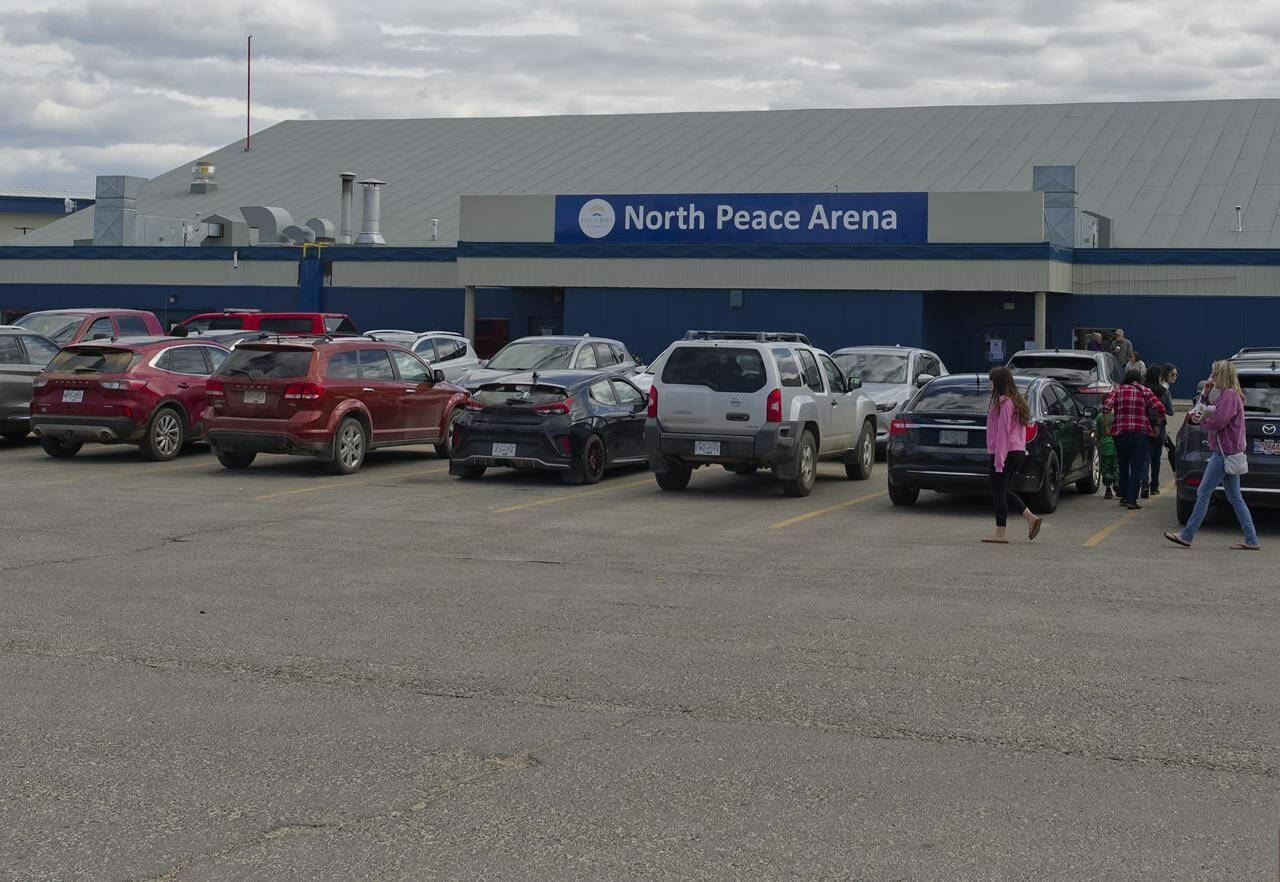Rain and the efforts of firefighters have brought some relief from wildfires in British Columbia’s northeast.
More than 100 fires continue to burn in B.C., but evacuation orders that forced thousands to flee Fort Nelson more than two weeks ago lifted Monday, residents began returning home, and the blaze that threatened the town has been deemed no longer out of control.
The Alaska Highway reopened, while 400 kilometres to the south a separate evacuation alert affecting the Doig River First Nation community ended.
The Northern Rockies Regional Municipality, that includes Fort Nelson and the Fort Nelson First Nation, jointly rescinded evacuation orders at 8 a.m., lifting roadblocks and clearing the way for people to go home, 17 days after they were ordered to flee as the Parker Lake wildfire came within a few kilometres of town.
The fire is now classified as “being held.”
The BC Wildfire Service said rain on Sunday and “16 days of sustained wildfire suppression” mean the 123-square-kilometre fire is not expected to grow.
But the blaze, which destroyed four homes and damaged six other properties, hasn’t been extinguished and the service said it expects parts of it to continue burning into the fall.
A statement from the municipality said the community has been deemed safe to re-enter but there are still active fires in the area.
An evacuation alert, requiring people to be ready to leave at short notice, is now in place.
The municipality said several damaged properties are not safe for the general public. An order is in place limiting access to those properties to only property owners, their designates or other permitted personnel.
The municipality said residents arriving home would have access to free cleaning kits provided by the Red Cross.
A statement from Northern Health said emergency services at Fort Nelson General Hospital are resuming.
“The hospital’s emergency department is reopening Monday morning with limited laboratory and medical imaging supports. Other departments will resume services in the weeks ahead,” the statement said.
The health authority said people requiring in-patient care will continue to be transferred to other facilities in the northeast.
Wildfire crews are also fighting the Patry Creek fire about 25 kilometres north of town, which is a holdover fire that was initially ignited by lightning in July 2023.
The regional municipality’s mayor, Rob Fraser, has asked residents to be patient as they navigate what’s expected to be heavy traffic on the highway between Fort Nelson and Fort St. John, 380 kilometres to the south, where many of the evacuees have been staying.
Highway 97, also known as the Alaska Highway, was reopened with pilot cars operating between the 301 and 309 mile marks, the wildfire service said. Nearby Highway 77 was also reopened, but with speed restrictions, it added.
At the Doig River First Nation, a wildfire evacuation alert was rescinded. The First Nation posted online that the “threat to life and safety has passed.”
The latest data provided by BC Wildfire Service lists 113 active wildfires in the province, 102 of which are in the northeast.
In a video update posted online Sunday, Hugh Murdoch, an incident commander working out of Fort Nelson, said there is a “tremendous amount of fire” in the region, with about 2,500 square kilometres burning in the Northern Peace complex.
Murdoch said 130 firefighters are working on the Parker Lake and Patry Creek fires, along with 11 pieces of heavy equipment and 19 helicopters.
“The summer is going to be a long one, I think. It’s had an early start again and there seems to be just so much fire on the landscape so early,” he said.
“And it’s not just lightning that’s going to give us our starts, but these holdover fires from the previous year (are) another source that’s giving us a lot of challenges.”
READ ALSO: Evacuation orders in and around Fort Nelson to lift Monday: mayor

